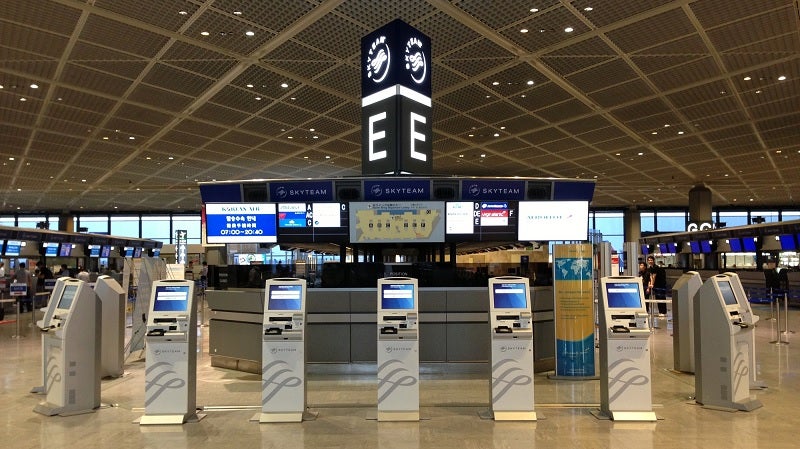
More international flights arrive and depart from Japan’s Narita International Airport (NRT) than any other airport in the country. The passenger handling facilities across the airport’s three terminals cover 896,000m².
NRT is strategically positioned not only as a gateway for visitors to Japan, but also for its air services network across the Asia Pacific region. The airport’s vision is to be Asia’s leading international hub, with world class safety standards and outstanding service quality. To that end, the airport has implemented strategies to encourage the three major airline alliances (oneworld, SkyTeam and Star Alliance) to establish NRT as their key operations hub.
With the expansion of new routes, increased flights and a rise in the number of visitors who use NRT as their gateway to Japan, especially from within Asia, NRT is experiencing a record level of activities. To continue promoting Japan as a popular tourist destination and in anticipation of the influx of visitors and air traffic for the 2020 Tokyo Games, the government has put in place new policies and measures to improve NRT’s competitiveness.
Outdated technologies hinder growth
To support its expansion plans, the airport was keen to offer the latest technology and best experience for its passengers. NRT recognized that installing a new system could improve its existing passenger processing infrastructure to support the ever-increasing passenger traffic.
A key part of NRT’s strategy included working closely with the relevant authorities, airlines and partners. Together, they teamed to promote automated self-service passenger travel procedures based on initiatives such as IATA’s FAST Travel and Smart Security. The benefits are significant: self-service technologies and common-use facilities reduce passenger processing and waiting times. This translates to shorter queues for passengers, increased efficiency for airlines, as well as higher handling capacity and less passenger terminal congestion for the airport. Ultimately, NRT’s goal is to have 80% or more of its passengers utilizing self-service by the end of FY 2018. How would it reach its goal? The airport turned to Rockwell Collins to implement the new self-service solutions.
One of NRT’s key criteria was a safe and secure migration from the old system to the new platform, without any disruption to daily operations. To ensure a seamless transition and stable on-going operations, Rockwell Collins organized a step-by-step approach to install and implement the new system without any downtime.
New systems speed processing, improve service
Passengers can now use Rockwell Collins’ ARINC SelfServ™ kiosks to check-in, have their boarding passes issued and baggage tags printed. To support its 30 million passengers, NRT installed a total of 304 ARINC SelfServ kiosks throughout the airport, making it the largest installation of self-service kiosks in the region.
The ARINC SelfServ kiosks are positioned at the front of the check-in counters and are easily accessed by passengers. In Terminal 1, Star Alliance changed the layout of the check-in area so that the check-in counters are now allocated by airline instead of class of travel. This reduced both the average per passenger check-in times, and the required check-in space. Since the launch, over 50% of Star Alliance’s economy class passengers have already started using the ARINC SelfServ kiosks.
NRT also deployed Rockwell Collins’ ARINC BagLinkTM baggage message distribution system in Terminals 1 and 2, ARINC vMUSETM and digital signage solutions in Terminal 3. These new solutions are in addition to the existing passenger processing solutions – ARINC vMUSE and ARINC SelfServ Kiosks – that were already operational in Terminals 1 and 2. Together these solutions will improve the efficiencies of airport operations and ensure NRT is prepared for the 2020 Tokyo Games.
Handling today’s passengers and ready for tomorrow
Rockwell Collins’ ARINC SelfServ kiosks provide NRT with a robust, secure and stable solution for its international check-in procedures, reducing line and waiting times. The SelfServ kiosks have a minimal footprint and can be easily integrated with complementary devices, such as biometric systems for future developments.
By ensuring a safe and step-by-step deployment, users were not even aware that there was an ongoing system migration during their daily operations. The SelfServ kiosks are fully integrated with existing infrastructure and applications, and ready for optimal performance.
To support ongoing operations, NRT looked to select a maintenance provider that could provide quick and timely resolution to alerts and problems, typically within 30 minutes from first call. Rockwell Collins’ maintenance team is able to provide on-site assistance whenever there is a request.
In the near future, the airport will install an additional self-service bag drop system in Terminal 1 as part of NRT’s continuous improvement efforts.
As the competition between international airports in Asia Pacific intensifies, NRT constantly reviews its airport’s capabilities to address the needs of airlines and passengers, leveraging the latest information and communications technologies to be the smart airport of today, as well as tomorrow.

